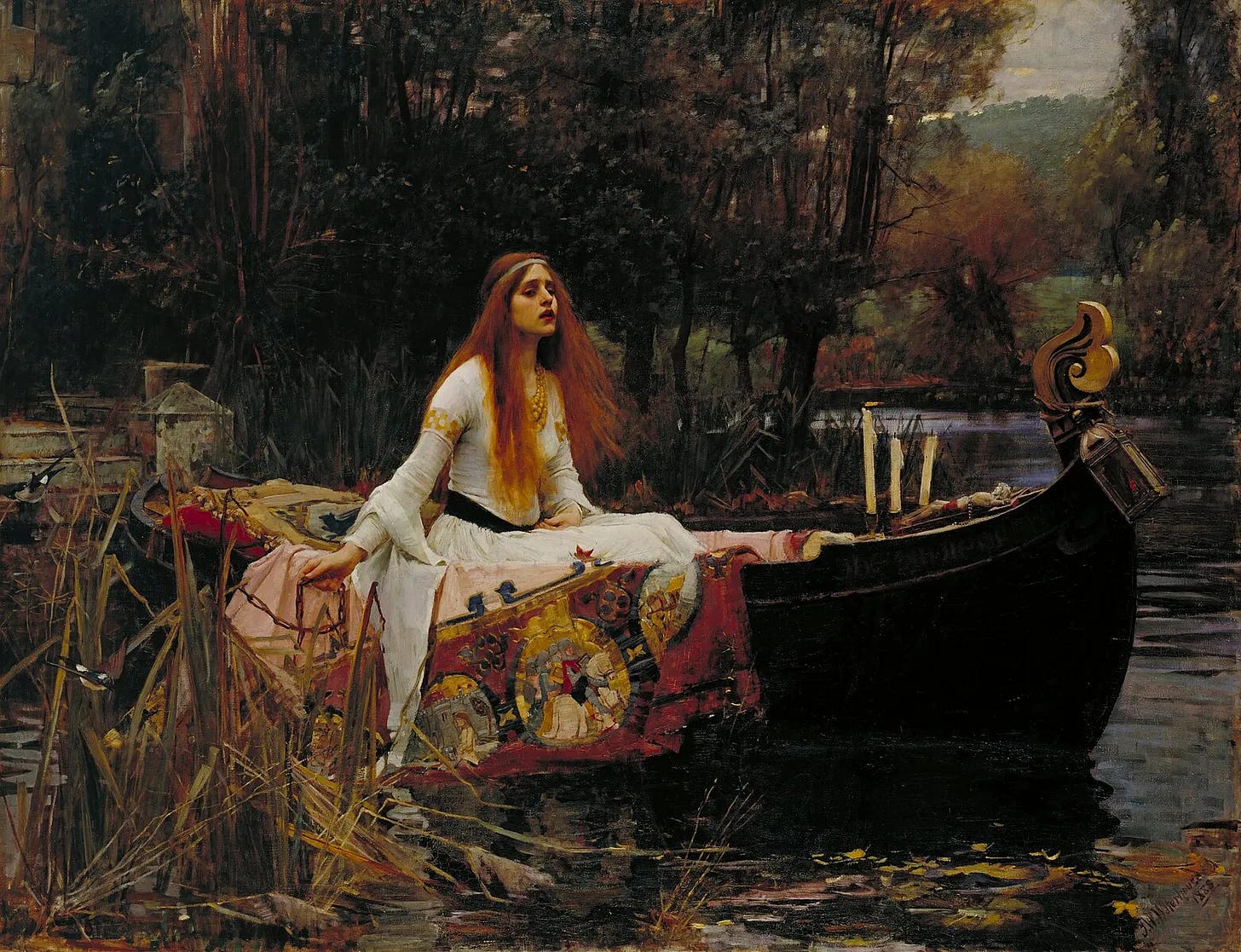Favorite Fall Paintings
My five favorite paintings of the most wonderful time of year.
Fall is the best season. Let’s dive in.
1. John William Waterhouse’s The Lady of Shalott - 1888

Waterhouse’s The Lady of Shalott features the protagonist of Alfred, Lord Tennyson’s poem of the same name, published first in 1832 and revised in 1842. Set in an Arthurian England, the Lady of Shalott is trapped in a tower, with her only view of the outside world a reflected window in her mirror. If she dares turn towards the real window, she is cursed to die.
So much of the story is left unexplained. Who cursed her and why? When the curse is enacted and the mirror breaks, why must she die? Why does she first board the boat and float down to Camelot? The reader never receives clear answers. It’s exactly the kind of tragic damsel and dreamy, romanticized Middle Ages that the Pre-Raphaelites loved to paint.
John William Waterhouse was not a member of the Pre-Raphaelite Brotherhood. Here is a refresher from an essay I…


